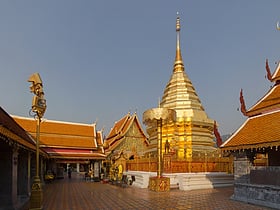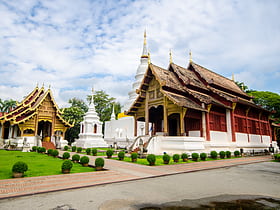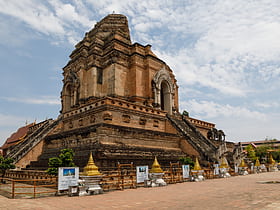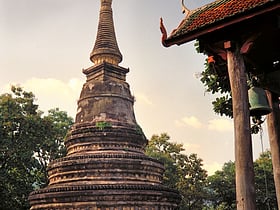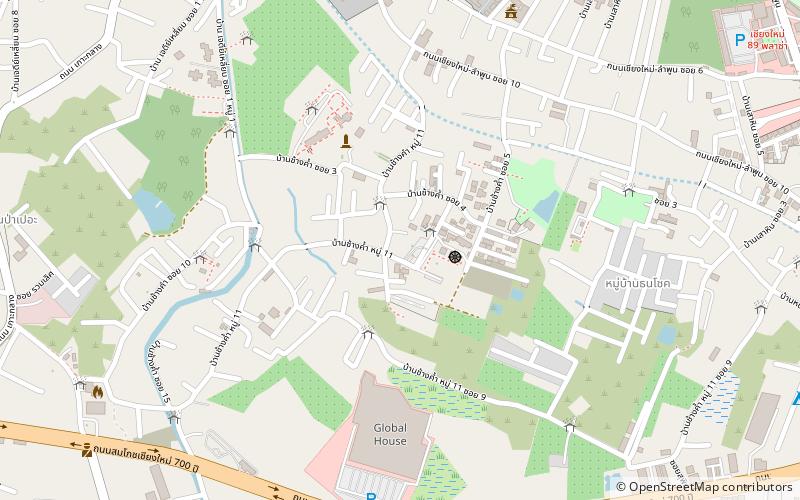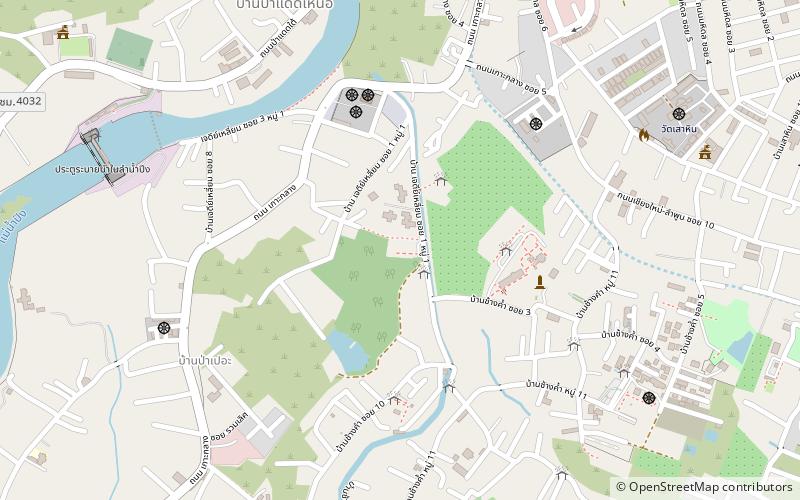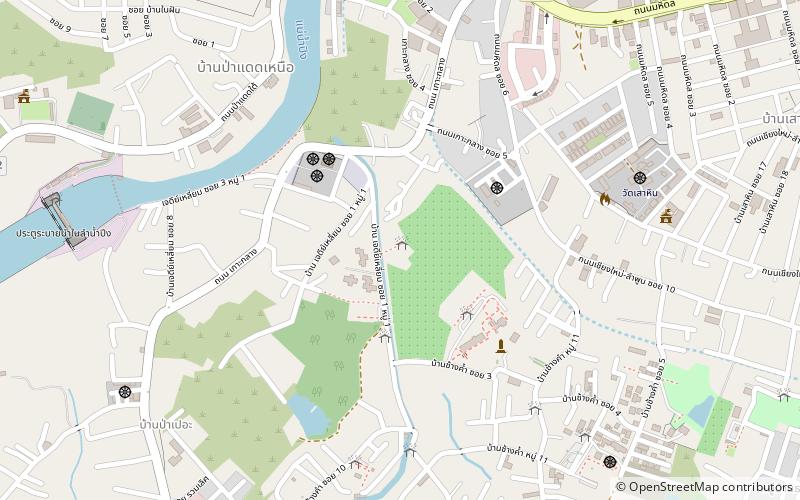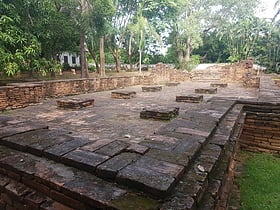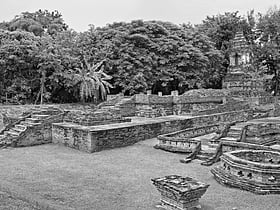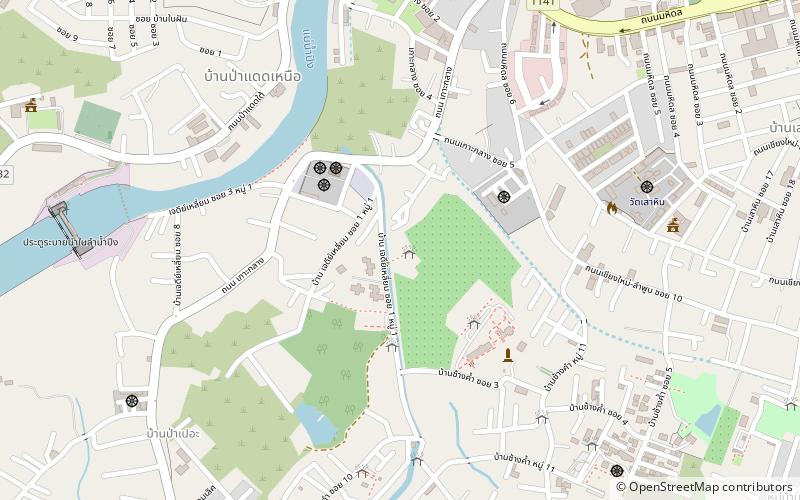Chiang Mai: Buddhist Architecture
Places and attractions in the Buddhist architecture category
Categories
- Temple
- Buddhist architecture
- Sacred and religious sites
- Buddhist temple
- Historical place
- Museum
- Shopping
- Park
Wat Phrathat Doi Suthep
Wat Phrathat Doi Suthep is an emblematic temple that graces the mountainous landscape of Chiang Mai, Thailand. This sacred structure is perched on the Doi Suthep mountain at an elevation of over 1,000 meters, offering visitors a panoramic view of the city below.
Wat Phra Singh
Restored 14th-century Buddhist temple Nestled within the ancient walls of Chiang Mai's old city lies Wat Phra Singh, one of the most revered temples in Northern Thailand. This sacred complex, adorned with intricate Lanna architecture, stands as a testament to the spiritual heritage of the region.
Wat Chedi Luang
Temple known for its ruined chedi Wat Chedi Luang, a majestic temple situated in the heart of Chiang Mai, Thailand, stands as a testament to the city's rich history and cultural heritage. This ancient structure, whose name translates to "The Temple of the Big Stupa," was originally built in the 14th...
Wat Umong
Venerable Buddhist temple built in 1297 Nestled in the lush forests on the outskirts of Chiang Mai, Thailand, Wat Umong is a unique and tranquil temple that offers visitors a glimpse into the spiritual heritage of Northern Thailand. Known for its ancient tunnel complex, this 13th-century temple stands as a...
Wat That Noi
Wat That Noi is a ruined temple of the Wiang Kum Kam archaeological area, outside of Chiang Mai in northern Thailand, so named because of its relatively restricted scale. It is adjacent to Wat Chang Kham, a larger site in the same group.
Wat That Khao
Wat That Khao is a ruined temple in the Wiang Kum Kam archaeological site, south of Chiang Mai in northern Thailand, thought to have been built in the 16th or 17th century. Its chedi is presumed to have been formerly lime-plastered, hence the name. The temple faces northeast.
Wat Phrachao Ong Dam
Wat Phrachao Ong Dam is a ruined temple that is part of the Wiang Kum Kam archaeological site which is located just outside the northern Thai city of Chiang Mai in Chiang Mai province.
Wat Chedi Liam
Wat Chedi Liam, formerly known as Wat Ku Kham, is one of the wats in the ancient Thai city of Wiang Kum Kam, now part of present-day Chiang Mai.
Wat Chang Kham
Wat Chang Kham, formerly known as Wat Kan Thom after the name of its builder, is a ruined temple that is part of the Wiang Kum Kam archaeological area, outside of Chiang Mai in northern Thailand.
Wat Nan Chang
Wat Nan Chang is a ruined 16th or 17th century temple in the Wiang Kum Kam archaeological complex near modern Chiang Mai in northern Thailand. Excavated from 2002 to 2003, the temple primarily provides evidence of ancient flooding in the region, having been inundated by some 1.8 meters of sediment.
Wat Pu Pia
Wat Pu Pia is a semi ruined temple in the Wiang Kum Kam archaeological complex, outside of modern Chiang Mai in northern Thailand. It is notable within the archaeological area inside Wiang Kum Kam for its relatively good state of preservation, including some remnants of stucco work and an intact layout.
Wat I Khang
Wat I Khang is a ruined 16th or 17th century temple in the Wiang Kum Kam archaeological complex near modern Chiang Mai in northern Thailand.
Wat Phaya Mangrai
Wat Phaya Mangrai is a ruined temple located within the Wiang Kum Kam archaeological site, very close to the south-eastern side of Wat Phrachao Ong Dam. It is named after the historic figure Mangrai the Great.
Wat Phan Lao
Wat Phan Lao is a ruined 16th century temple in the Wiang Kum Kam archaeological area near Chiang Mai in northern Thailand.
Wiang Kum Kam
Tranquil site of ancient brick ruins Wiang Kum Kam is an historic settlement and archaeological site along the Ping River, which was built by King Mangrai the Great as his capital before he moved it to Chiang Mai.
Wat Buppharam
Wat Buppharam is a Buddhist temple in Chiang Mai, Thailand. Founded in 1497 by King Mueang Kaeo, the temple was where Kawila began a ritual circumambulation of Chiang Mai to reoccupy it after two centuries of Burmese rule. Most of the temple buildings date to the late 1800s.
Map

